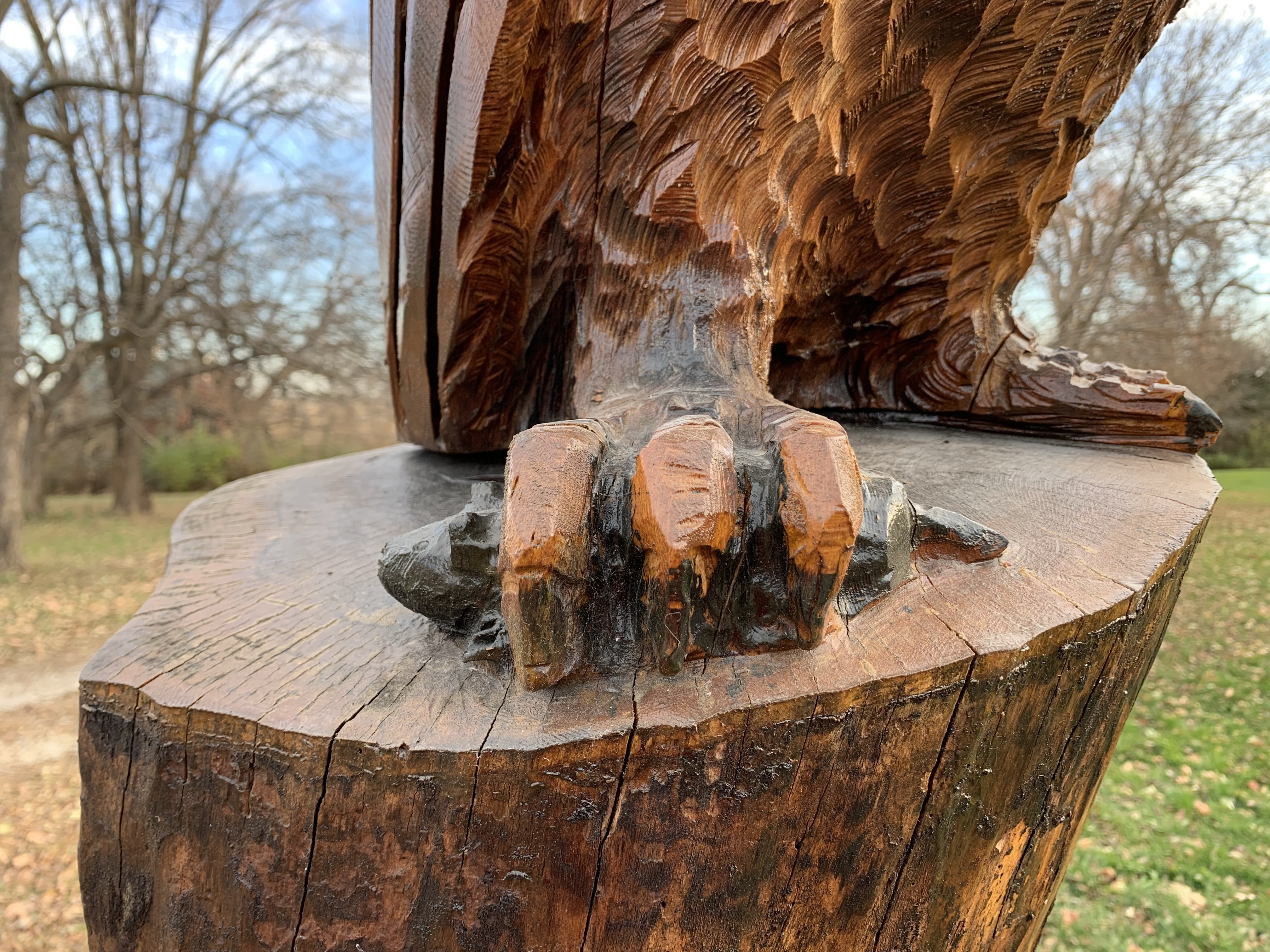On Owl Acres, we have a chainsaw carving of a barred owl. Captured in her talons is a mouse-sized critter whose short tail suggests a vole rather than a mouse. Mother Nature seems to have several niches for little mammals like mice whose main job is to convert plant material to meat for a whole range of predators. Owls, hawks, snakes, coyotes, foxes, weasels, shrews, and other carnivores consider them tasty morsels. Another type of critter in this category that we don’t think much about is the vole.
Three species of voles are native to Iowa. The prairie vole, the woodland vole, and the western meadow vole. They tend to be specific to certain habitats. As their names suggest, the prairie vole is native to the prairies and likes living where there are native prairie plants to eat. The woodland vole, on the other hand, prefers to live under the duff beneath the trees. And the meadow vole prefers open grasslands, fields, lawns, and roadside ditches. They especially like dense, moist grass.
Because Owl Acres has some open meadow and is surrounded by roadside ditches, farm fields, and fencerows as well as some open woods, habitat is abundant for the western meadow vole (Microtus drummondii).
Voles have stout bodies, front claws they use for digging and fighting, little eyes and ears, and a blunt snout with whiskers. Their legs and tails are short, but they can move quickly. Their fur is thick and soft and ranges from gray to brown. Voles grow up to seven inches long, and they live mostly in tunnels and runways under the vegetation. They don’t migrate, so in the winter they create tunnels under the snow and line them with dry grass. Although they are active at all times of the day and night, they are usually hidden under vegetation, so we don’t see them very often.
Voles are rodents and are sometimes called field mice. They aren’t mice, though. They are more closely related to hamsters and lemmings than to mice. Like lemmings, vole populations have wide swings on a multi-year cycle. One year there may be only 14 voles to the acre, and another year as many as 500. These cycles occur even in fairly stable environments, and the jury is out regarding their cause.
Their primary food is grass, forbs and sedges, and like all rodents, voles have to continuously gnaw on things to keep their teeth in condition. So the bark of young trees is one potential food source in the winter. They can kill the tree by standing on their hind legs and gnawing a ring around the tree near the ground. Voles also create runways in dense grass throughout the year. This does not endear them to lawn perfectionists and greenskeepers. It does, however, help to loosen and aerate the soil which benefits many species of plants and animals.
Along with their runways at the surface, voles dig deeper burrows which they use to stay warm in winter, sometimes denning with other voles in little colonies. They also store seeds, bulbs and tubers in their burrows and carve out separate chambers for nesting and giving birth. Voles are prolific breeders, comparable to mice in the numbers of babies they can produce in a year. They breed year-round and from conception to weaning only takes about six weeks. A female vole could produce from fifty to seventy offspring in a calendar year. Mortality is really high, though because every meat-eater bigger than a spider wants to eat them.

A fur-covered sphere of food. Meadow vole. Photo from Wikimedia.org by Creator:Japanesetea
As true prairies and woodlands are turned into farmland, meadow voles get more habitat and are able to flourish. Meanwhile populations of woodland and prairie voles are decreasing in some areas as their habitats are destroyed. We’re not lawn perfectionists on Owl Acres, so we’ll let these little guys and their cousins go on their way. Our owls will help keep them under control.
Feature photo by Author. Alt text: Closeup of the Meadow Vole in the talons of the namesake tree sculpture at Owl Acres.
